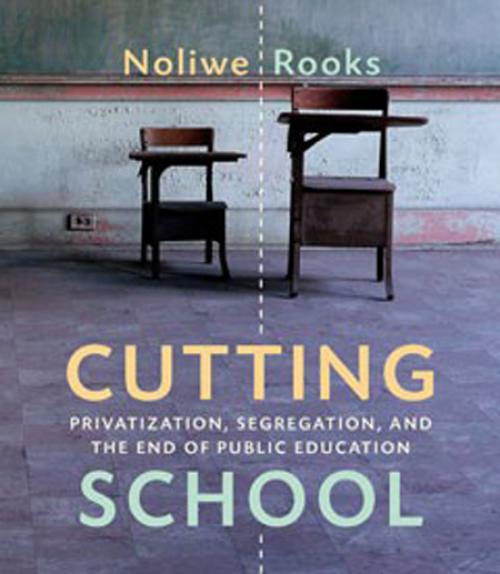Why are public schools failing? Why is school segregation higher than it’s been since the mid-20th century? To answer these questions, Noliwe Rooks followed the money. Her new book, “Cutting School: Privatization, Segregation, and the End of Public Education,” traces the financing of segregated education in America, beginning with Civil War reconstruction to today.
“Post-Reconstruction, the fight was already around funding – who was going to pay for black people’s education? And how much did they need, when there were crops that needed to be picked?” says Rooks, director of Cornell’s American Studies Program and associate professor of Africana studies.
Rooks found the same social dynamics playing out today. She breaks down the fraught landscape of “segrenomics,” showing how experimental solutions to so-called achievement gaps – including charter schools, vouchers and cyber schools that rely on, profit from and ultimately exacerbate high levels of racial and economic segregation under the guise of equal opportunity.
While the topic is timely, Rooks has been working on her book for the better part of 10 years. Her research reveals national trends, such as people of color being prosecuted as felons for “theft of school” – using the address of a family member or friend to enroll their child in a school system where they do not live. Some examples Rooks offers are a homeless woman using the address of her babysitter and a live-in housekeeper using the address of her employer.
“School systems all over the country have started contracting with private detectives, starting whole new surveillance entities to catch parents doing this,” says Rooks. “Overwhelmingly the people who are being prosecuted are people of color.”
This power dynamic dates to post-Reconstruction America, says Rooks, when whites in the South felt blacks were “stealing school” from their children because it was a waste to educate blacks.
Rooks also details the use of virtual education, especially in urban areas, as the preferred method of educating poor children despite the approach’s failures; for example, between 2011 and 2014 in Philadelphia, every virtually educated child failed every state test. Despite this 100 percent failure rate, virtual schools have continued to expand in Philadelphia and elsewhere.
Profiting from the nation’s failure to provide a high-quality education to all children has become big business, says Rooks, pointing to the example of convicted felon Michael Milken, who was a founding investor in a company called K12 that would go on to become a $2.5 billion business selling virtual education to public schools. Despite the company having been sued or investigated by the federal government 56 times and having paid up to $200 million in fines, it it continues to win contracts with public school systems.
The threat to public education has uncovered a fragility to American democracy and revealed a way for it to be easily undermined, says Rooks. “One of the first lines of attack for those who have been trying to privatize public schools is to create a crisis around the funding of the public schools or to take advantage when there’s a disaster. Once funding is cut, they reallocate money so the public school systems are struggling, and then they are ‘forced’ to suspend the democratically elected school boards and take over. And that only happens in communities that are really poor and struggling,” she says.
Rooks’ goal with “Cutting School” is to shift the conversation around public education. “I’m not just presenting facts, although the book is deeply researched,” she says. “This is advocacy on behalf of schoolchildren who are poor and who are having funding taken from them.”
This story also appeared in the Cornell Chronicle.




